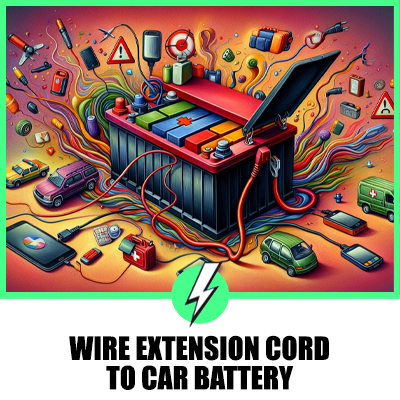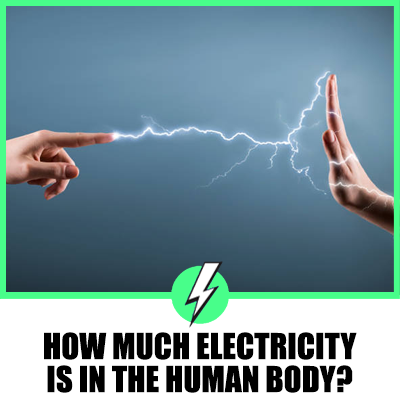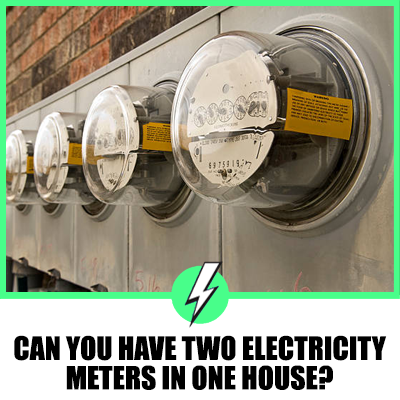Wire Extension Cord to Car Battery
Wondering if you can turn your car into a mobile power source?
You’re in luck! Wiring an extension cord to your car battery is a clever hack that opens up a world of possibilities, from powering camping gear to charging devices on the go. With the right tools, a bit of know-how, and attention to safety, you’ll be set up before you know it.
Well, we’ll be going over:
- What tools and materials do you need to get started?
- How can you ensure your setup is safe and efficient?
- What steps should you follow to connect the extension cord correctly?
Let’s dive in!

Contents
Tools and Materials Needed
Before you embark on wiring an extension cord to your car battery, ensure you’ve gathered all necessary tools and materials. This preparation step is crucial for a smooth and safe installation process.
Firstly, you’ll need a high-quality extension cord. Opt for one that’s durable and rated for outdoor use to ensure it can handle the fluctuating temperatures and conditions it’ll be exposed to.
Next, wire cutters and strippers are essential for cutting and stripping your extension cord, allowing you to connect it efficiently to the battery terminals.
A set of spanners or a socket wrench will come in handy for loosening and tightening the battery terminals.
In addition, electrical tape and heat shrink tubing are must-haves for insulating your connections, ensuring they remain protected against the elements.
Lastly, considering safety, a pair of rubber gloves and safety glasses should be worn throughout the process to protect against accidental sparks or debris.
Gathering these tools and materials before starting will not only streamline your installation process but also ensure it’s performed safely and efficiently.
Safety Precautions to Follow
Before diving into the task of wiring an extension cord to your car battery, understanding and adhering to safety precautions is paramount.
Your safety is the top priority when dealing with electrical systems.
First, always wear rubber gloves and safety glasses. These items provide a basic barrier against potential electric shocks and protect your eyes from any sparks or debris.
Ensure the area you’re working in is well-ventilated. Car batteries release gases that can be harmful if inhaled in enclosed spaces.
Working outdoors or in a garage with doors open is ideal.
Disconnect the battery before you start. Removing the negative cable from the battery can prevent accidental short circuits as you work.
Finally, inspect your tools and materials for any wear or damage. Compromised equipment can increase the risk of accidents. Use only tools and extension cords that are in good condition and rated for the task.
By following these simple yet effective safety measures, you can significantly reduce the risk of injury or damage to your vehicle during the installation process.
Steps to Connect the Extension Cord
Before diving into the steps, ensure all safety precautions are in place. Now, you’re ready to connect the extension cord to your car battery.
First, locate your car battery and identify the positive and negative terminals. Generally, the positive terminal is marked with a plus (+) sign and is often covered with a red cap.
The negative terminal, usually marked with a minus (-) sign, may have a black cap.
Next, take your extension cord and strip the ends of the wires if they’re not already prepped. You’ll need to expose enough wire to ensure a secure connection to the battery terminals.
It’s also wise to ensure the cord is long enough to reach your desired power point without stretching or causing a tripping hazard.
attach the positive wire (often red) of your extension cord to the positive terminal of the battery. Use a wrench to loosen the terminal bolt, slip the wire beneath, and tighten the bolt securely.
Repeat this process with the negative wire (usually black) and the negative terminal.
Finally, double-check all connections to ensure they’re tight and secure. Be particularly careful to ensure the wires are not crossing each other in a way that could cause a short circuit.
Testing the Connection
Once you’ve securely connected your extension cord to the car battery, the next critical step is to test the connection to ensure it’s correctly established. Begin by using a multimeter, an indispensable tool for this task.
Set your multimeter to the voltage setting, usually denoted by a “V,” and ensure it’s appropriate for your battery’s voltage, typically 12V for standard car batteries.
Attach the multimeter’s positive lead to the extension cord’s positive wire and the negative lead to the negative wire.
You’re looking for a reading that’s close to your battery’s nominal voltage. A 12V battery, for instance, should show a reading between 12.6V (fully charged) and 11.6V (discharged).
Important Fact: If the voltage reading is significantly lower than expected or there’s no reading at all, double-check your connections for any loose wires or poor contacts.
It’s crucial that these connections not only are secure but also are making a good electrical contact.
Ensuring your extension cord is properly wired to your car battery involves meticulous preparation and testing.
Without a thorough test, you risk the system not functioning as intended, which could lead to inconvenience or even safety hazards down the line.
By following these steps, you’re contributing significantly to the safe and effective use of your car battery-powered devices.
Benefits of Connecting to Car Battery
When you decide to wire an extension cord to your car battery, you unlock a host of benefits that enhance your automotive experience.
By tapping directly into the power source of your vehicle, you ensure that you’re never left without access to electricity when you most need it.
Firstly, portability becomes a game-changer. You can power devices on the go, making your car a moving powerhouse.
Whether it’s for charging gadgets during a long road trip or powering essential tools in remote locations, you’ve got the means to stay connected and productive.
Secondly, the reliability of your car’s battery as a power source is hard to beat. Unlike portable power banks or generators, your car battery offers a stable and substantial power supply.
This is particularly useful in emergencies when other power sources might not be available.
Additionally, tapping into your car battery for power can be a cost-effective solution. You’re utilising an existing resource, avoiding the need to invest in additional portable batteries or generators.
This not only saves you money but also reduces clutter from carrying extra devices.
Connecting an extension cord to your car battery effectively transforms your vehicle into a versatile power source.
Whether it’s for convenience, emergency preparedness, or simply to enhance your mobility, the practicality of such a setup is undeniable.
Conclusion
Harnessing the power of your car battery for electricity on the move is a game-changer. You’ve seen how it not only brings convenience into your life but also stands as a reliable companion during emergencies.
By connecting an extension cord to your car battery, you’re unlocking a world of possibilities, ensuring you’re always powered up, no matter where you are.
This approach not only saves you money by negating the need for extra batteries or generators but also keeps your space clutter-free.
So, whether you’re looking to boost your productivity or ensure you’re prepared for any situation, tapping into your vehicle’s power source is the smart move.
Embrace the versatility and enhanced mobility it offers, and you’ll wonder how you ever managed without it.





